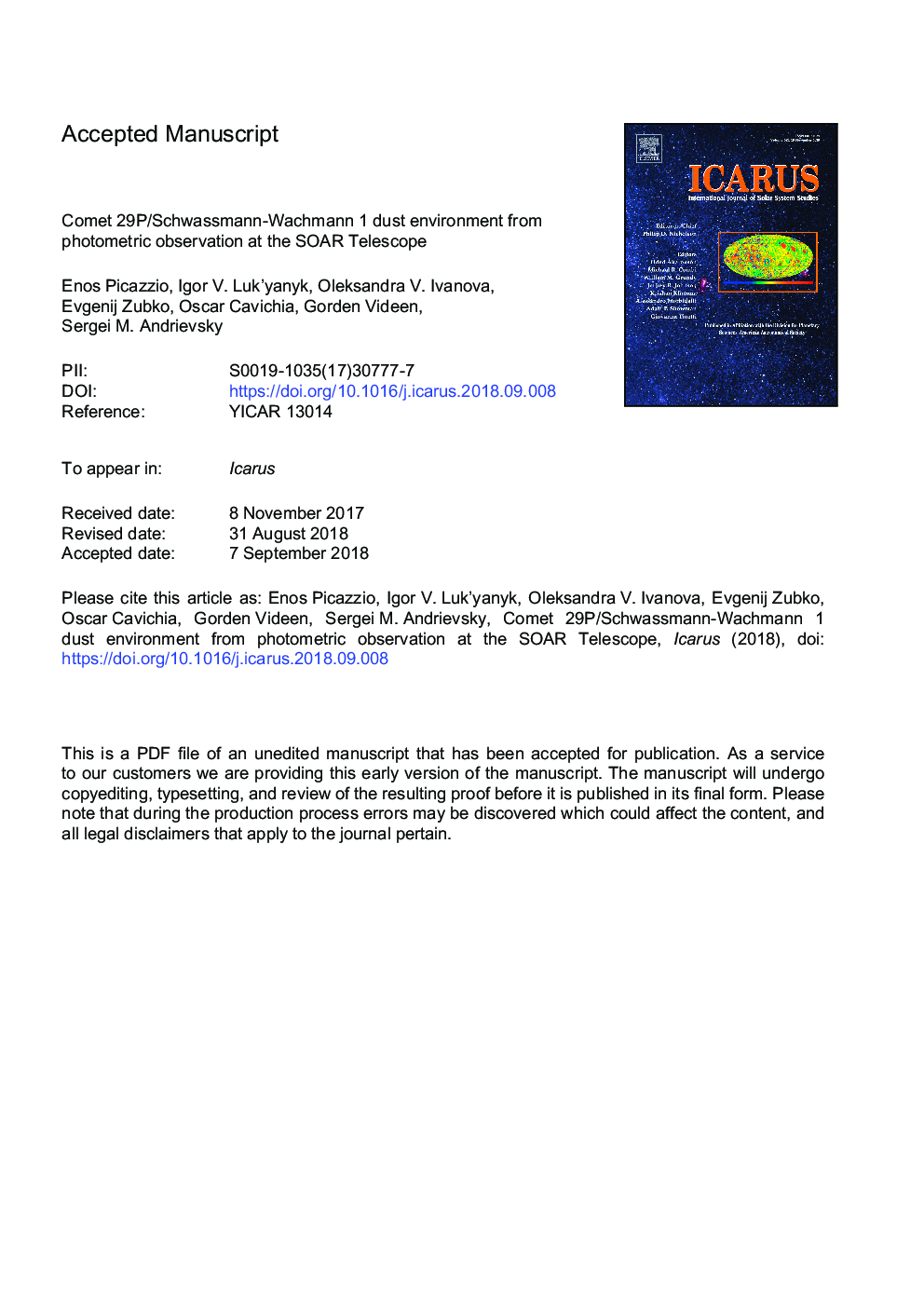| Article ID | Journal | Published Year | Pages | File Type |
|---|---|---|---|---|
| 10156428 | Icarus | 2019 | 38 Pages |
Abstract
We report photometric observations of comet 29P/Schwassmann-Wachmann 1 made on August 12, 2016 with the broad-band B, V, R and I filters and the SOAR 4.1-meter telescope (Chile). We find the comet active at that time. Enhanced images obtained in all filters reveal three radial features in the 29P/Schwassmann-Wachmann 1 coma, regardless of the image-processing algorithm. Using a high-resolution spectrum of comet 29P/Schwassmann-Wachmann 1 reported by Ivanova et al. (2018) on the same date, we estimate the relative contribution of the gaseous emission and the continuum to the total response measured with our broadband B and V filters. The gaseous-emission contribution appears to be very small, 2.5%. We compute the dust production AfÏ in 29P/Schwassmann-Wachmann 1 for the four filters and find its growth with the wavelength, from 3,393 ± 93 cm in the B filter to 8,561 ± 236 cm in the I filter. We model the color slope of dust in Comet 29P/Schwassmann-Wachmann 1 using agglomerated debris particles. Simultaneous analysis of the color slope in the B-R and R-I pairs suggests a single dominant chemical species of 29P/Schwassmann-Wachmann 1 dust particles consisting of Fe-Mg silicates and obeying a power-law size distribution with index n â¯ââ¯Â 2.55. This conclusion is consistent with the previous thermal-emission study of 29P/Schwassmann-Wachmann 1.
Related Topics
Physical Sciences and Engineering
Earth and Planetary Sciences
Space and Planetary Science
Authors
Enos Picazzio, Igor V. Luk'yanyk, Oleksandra V. Ivanova, Evgenij Zubko, Oscar Cavichia, Gorden Videen, Sergei M. Andrievsky,
